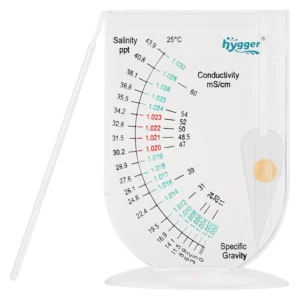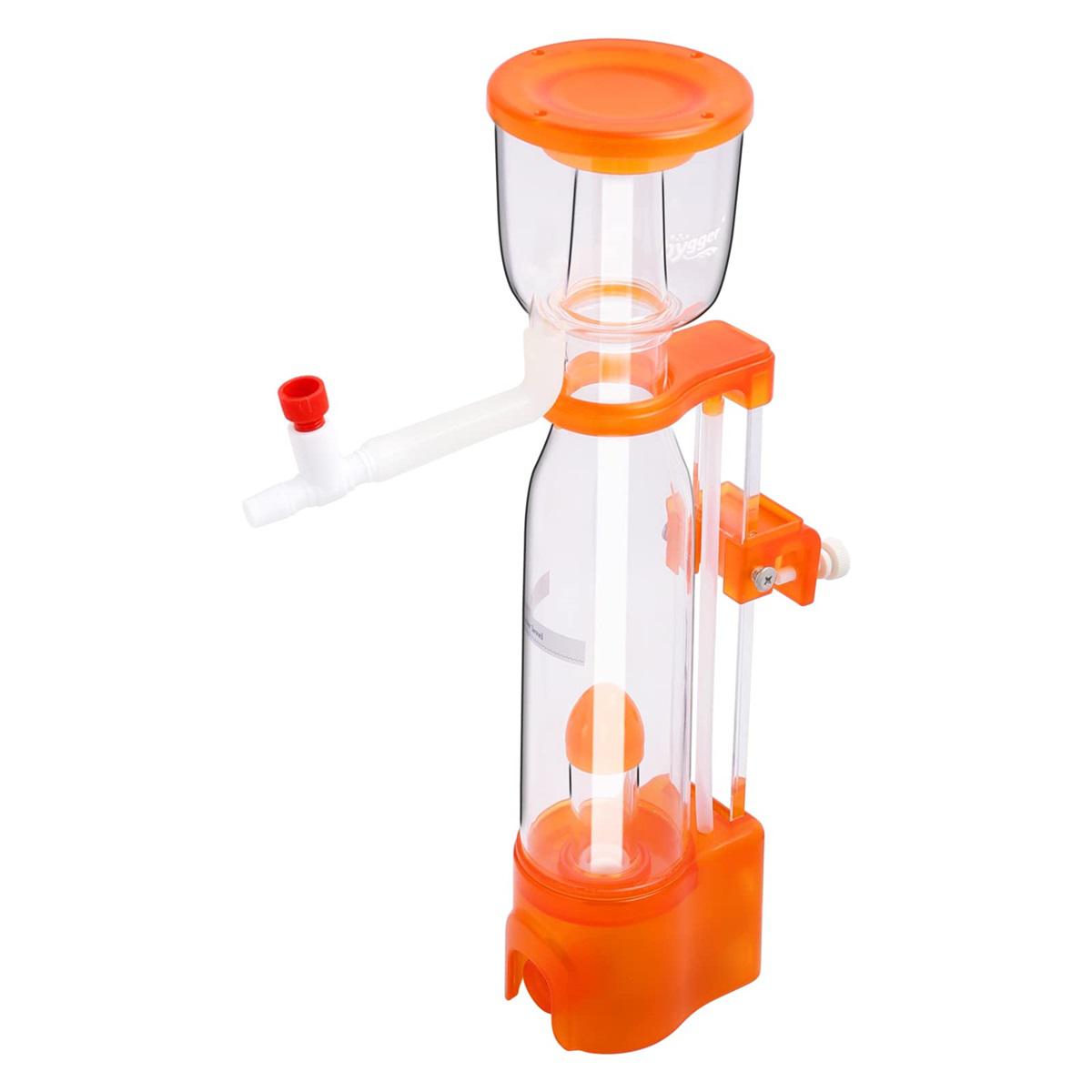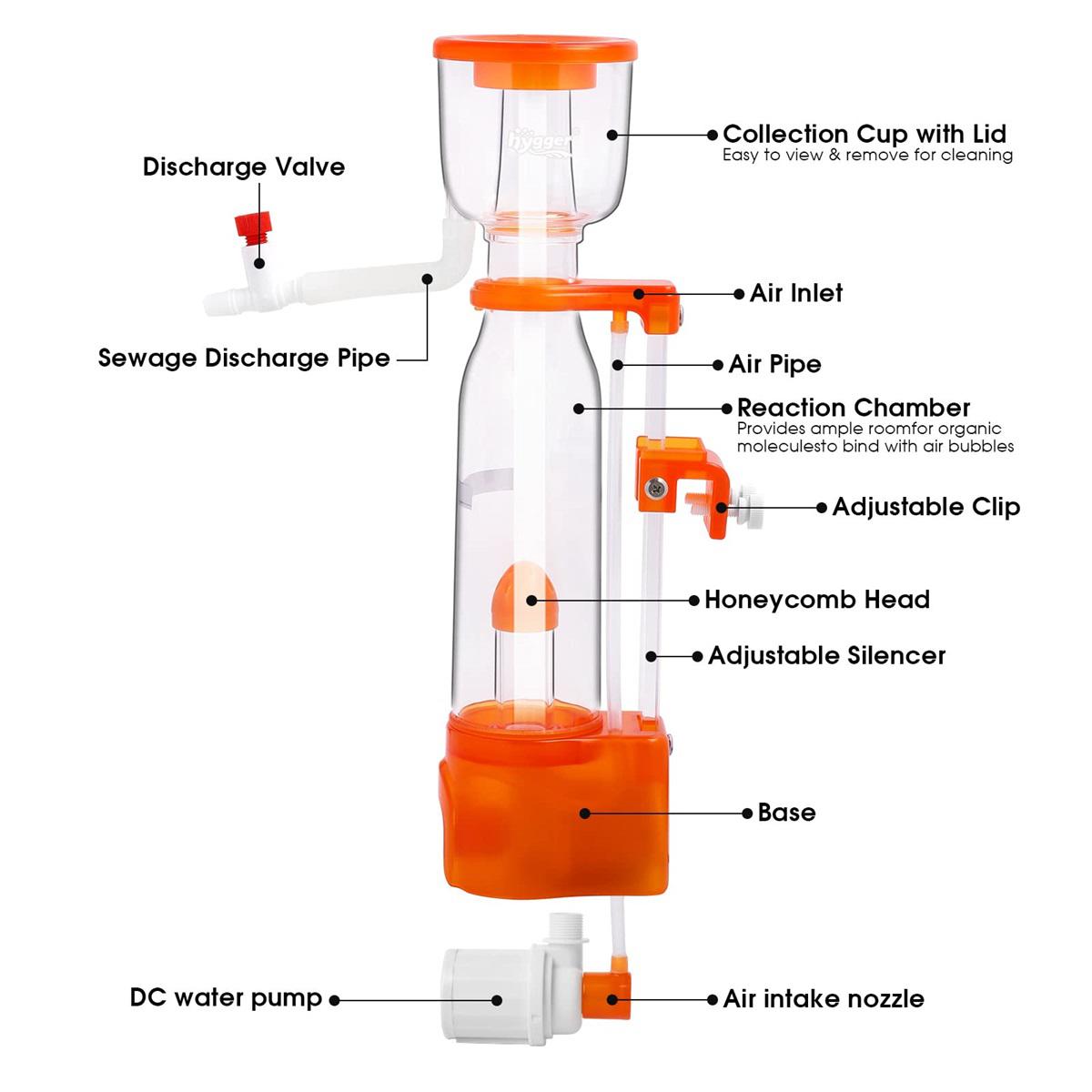Fish Profile – Six Line Wrasse Fish For Reef Tanks
Six-line wrasse is a color addition to any fish tank. It carries numerous attributes that make it unique from the rest of the fish. Before introducing them to your aquarium, know the sixline wrasse fish profile and other details. In the following, you will learn about the profile, features, interesting facts, feeding habits, and about suitable tank mates.
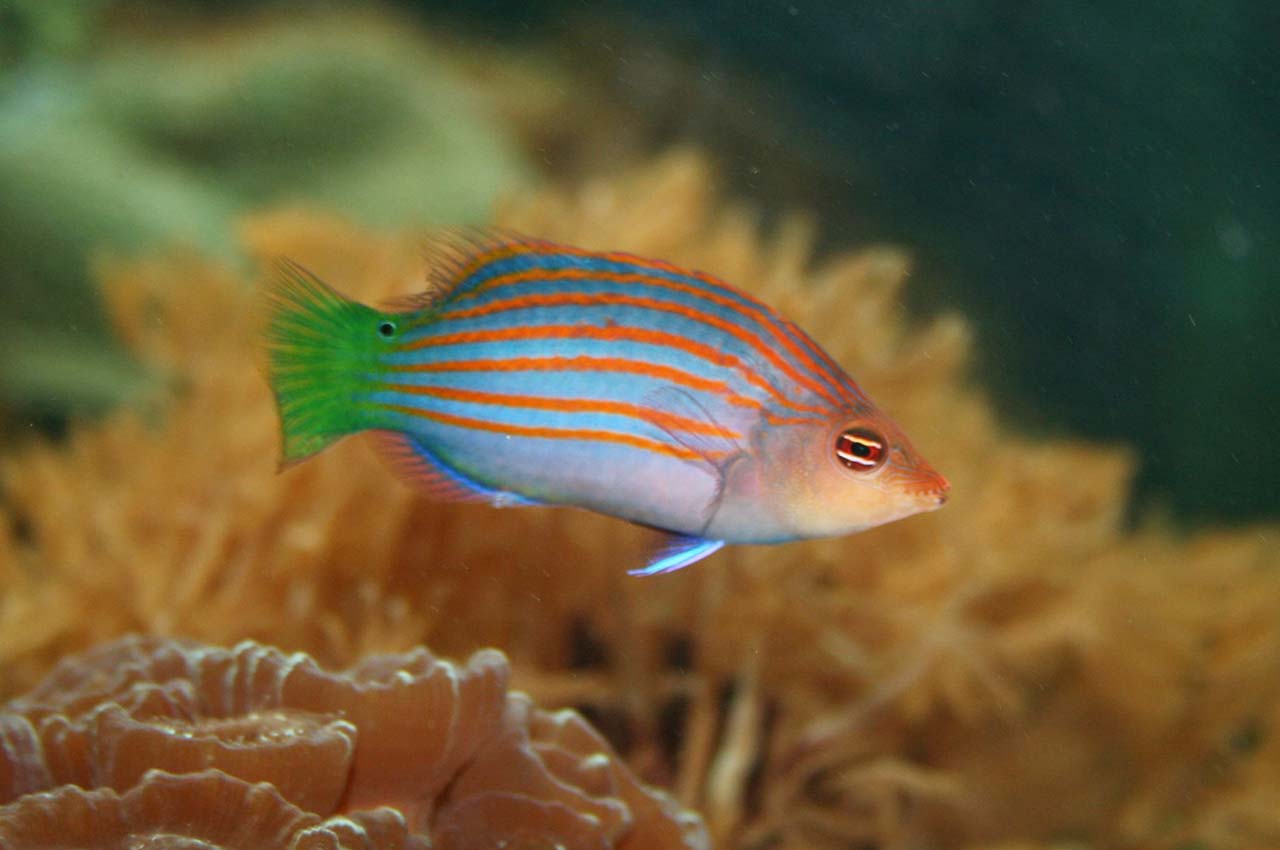
Sixline Wrasse Fish Species Profile
Here is the six-line wrasse fish profile that will help you to understand them more.
Name and Origin
Sixline wrasse is a marine fish that belongs to the Labridae family. Its scientific name is Pseudocheilinus hexataenia. It’s also called Six stripe Wrasse and Six Bar Wrasse in the aquarium community. They live in the Red Sea, Indian Ocean, and Pacific Ocean. They inhabit warm, shallow, and clear water near the coral reefs. 35 meters is the maximum reported depth where they are present.
Physical Appearance
Six-line wrasse is a beautiful and colorful marine fish. It has a bluish-purple body with six horizontal orange lines, an orange face, and a green tail. There are two white horizontal lines in orange-red eyes. A false eye on the tail side helps to keep themselves safe from predators in the sea.
Size and Age
| Maximally | 10cm |
| Lifespan | lives up to 7 years |
Six Line Wrasse Fish Features
Here are some six-line wrasse features that will help you keep them in the tank better.
Behavior
Six line wrasse have semi-aggressive behavior. It is shy in the wild but becomes energetic on acclimatization to the environment. In general, they are peaceful. However, they become aggressive with new fish, same species, or small fish.
The aggression is also prominent when they lack food, space, and other parameters. They usually nip the fins. Therefore, introduce them in the tank at the end.
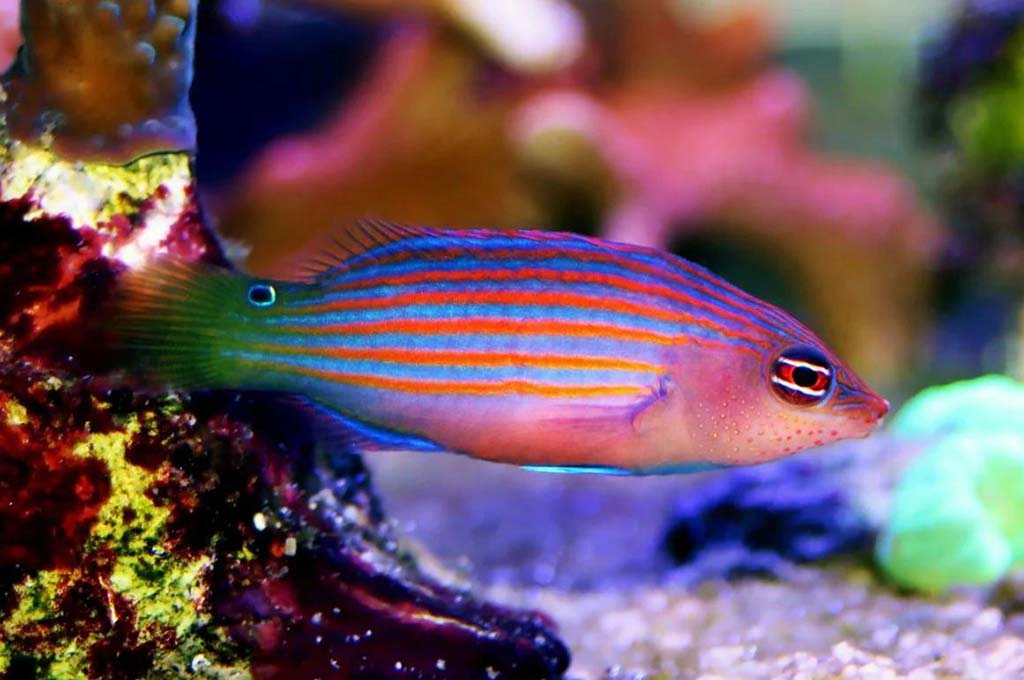
Tank Requirements
A minimum 30-gallon tank is required to raise a six-line wrasse. Some experts also said a 55-gallon aquarium is the most suitable for a six-line wrasse. When they don’t find enough space, they become offensive to others. Other water parameters required for the fish are the following.
| Temperature | 24 – 28℃ | Ammonia Level | 0–0.25 |
| pH | 8.1–8.4 | Water Hardness | 8 to 12 dkH |
| Dissolve Oxygen Level | 5–6 ppm | Specific Gravity | 1.022-1.025 |
| Light | bright to medium | Substrate | 7 to 10 cm thick soft sand |
| Water Change | 10 – 25% each week | Filtration | Needed |
Tips: Introduce live rocks and other hiding spots, as their natural habitats have all of these things.
Disease and Cure
The following are some of the common diseases among six line wrasse.
| Uronema disease | Red Band Syndrome |
| Pillularis | White spots |
Adopt proper hygienic conditions for your fish to avoid these diseases. If you find any of the six-line wrasse sick, move them to a quarantine tank and treat them until they become healthy.
Interesting Facts
Here are some interesting facts that define the six line wrasse profile.
- They release mucous cocoons while sleeping to avoid being prayed.
- They are excellent for getting rid of pests, i.e., parasitic pyramidellid snails, bristle worms, and flatworms.
- six line wrasse is an excellent cleaner in terms of copepods, ectoparasites, etc.
- There is no external difference in characteristics between males and females.
- They are good at hiding, so they can snatch a share of other fish’s food.
- It’s tough to breed in the tank because they spread all around the tank. Most of their eggs end in the filtration system.
Is Six Line Wrasse Reef Safe?
Yes, six-line wrasse are reef-safe fish. They are a suitable option for coral reef aquariums. Moreover, they help to create a well-balanced ecosystem.
What Do Six Line Wrasse Eat
Six stripe Wrasse are carnivores. In the wild, they eat crustaceans and invertebrates. However, you can feed them with various foods in your marine tank. The food should be 100% meaty and enriched with proteins. You can feed them with the following food items.
| Copepods | Krill | Frozen meaty preparations | Brine shrimp | Pyramid snails |
| Flake foods | Pellets | Small invertebrates | Mysis shrimp | Zooplankton |
| Crustaceans | Flatworms | Algae in flakes or pellets | Bristle worms |
How to Feed Your Six-Line Wrasse?
Feed them twice a day. You can also go three times a day with a reduced dose or set the potion via an intelligent fish feeder. The dose should be finished within two minutes. Otherwise, it will raise the ammonia level of the tank. Changing the food item will help them to enjoy the meal. Spread the food all around the aquarium to minimize the competition. Otherwise, they become aggressive.
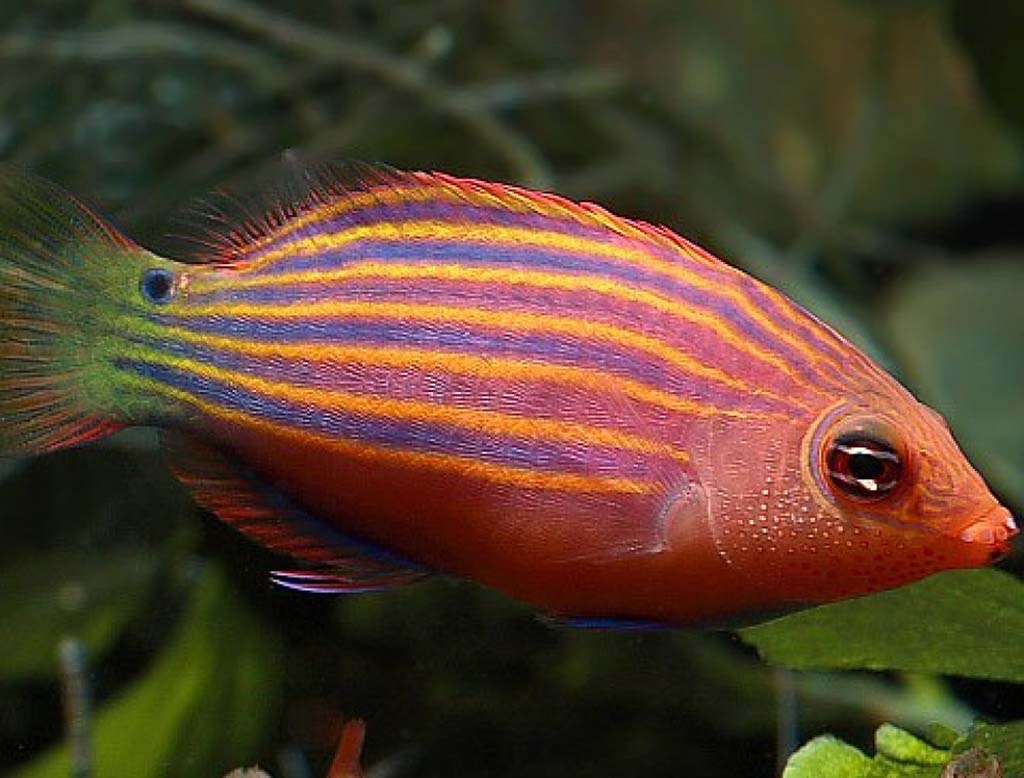
Six Line Wrasse Tank Mates
Six-line wrasse is a social fish, but not like others. They have semi-aggressive behavior and are suitable for fish only, reef fish, and fish only live with rocks. The companions should have enough energy to compete with it.
Their aggression arises when they lack food, space, and other conditions. Six line wrasse become fin nipper. Moreover, they have aggressive behavior toward another six-line wrasse. Therefore, keep only six-line wrasse fish in a reef tank. The smaller and shy fish are not suitable for their company. Considering all the points, here are some fish you can keep with them.
| Powder Brown Tang | Tomato Clownfish | Yellow Tang | Angelfish |
| Copperband Butterfly | Maroon Clownfish | Clown Triggerfish | Damsels |
Summary
Six line wrasse is a beautiful Indo-Pacific native that is a suitable additive in any tank. This 3-inch fish is named after the six horizontal lines on the body. They are hardy and can be in different conditions. However, create suitable conditions to observe optimal growth.
They are suitable to add in single from their family with big and strong companions in the tank because they become aggressive to their family and small fish. Moreover, properly feed them on meaty food and properly handle sickness. These are some important aspects of the six-line wrasse profile.

